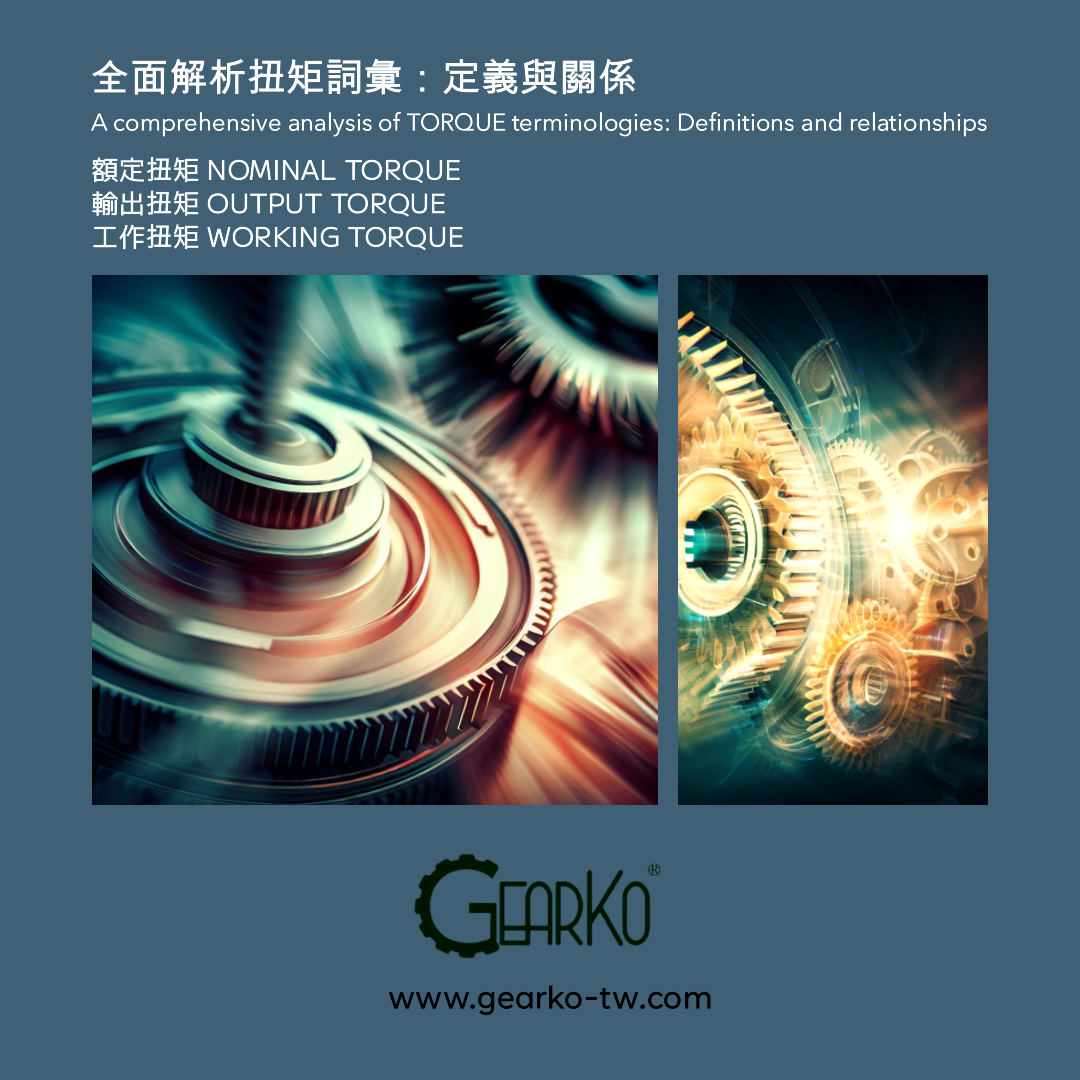2023.07.11
A Comprehensive Analysis of Torque Terminology: Definition and Interrelation of Nominal Torque, Output Torque, and Working Torque

When it comes to mechanical or power systems, torque is a crucial concept. It represents the moment of force or rotational power, and different forms of torque have different definitions and applications. Let's start with the basic definition of torque. According to the explanation from Wikipedia, in physics, the tendency of a force to cause an object to rotate around an axis or pivot point is called a moment of force or moment. It measures the "turning," "twisting," or "bending" effect produced by the force on an object.
The torque that causes a mechanical component to rotate is also known as turning moment or moment of rotation.
In the fields of materials mechanics, civil engineering, and architecture, the force couple resulting from shear forces on a specific section of a structure or component is called torque, while the moment resulting from normal stresses on a specific section is called bending moment.
To help you better understand the concepts of "turning," "twisting," and "bending," let's provide some examples from everyday life:
Turning: Applying force to open a door or push out a window, causing them to rotate.
Twisting: Applying force to wring out a wet towel.
Bending: Applying force to break a sugarcane.
These examples illustrate the practical applications of torque, turning moment, and bending moment in daily life.
Now let's focus on the torque considerations for mechanical equipment when aiming for safe and normal operation. Specifically, let's understand what rated torque, output torque, and operating torque mean.
Rated Torque: This is a characteristic of the gearbox itself and is a fixed value related to the gear module size, gear ratio, and type of gearbox. The rated torque value differs for different sizes and gear ratios of planetary gearboxes. Designers determine a suggested maximum torque value through simulations or tests to guide users and prevent overloading that could shorten the lifespan of the gearbox. The rated torque value for planetary gearboxes can generally be found in the performance specifications table of various catalogs.
Output Torque: This refers to the actual torque output after the gearbox is coupled with a motor. It depends on factors such as the motor power, gearbox transmission efficiency, power consumption, and gearbox size. The output torque can be calculated using the following formula:
Gearbox Output Torque (T) = 9550 × Motor Power (P) × Gear Ratio (i) × Load Coefficient (η) / Motor Rated Speed (n)
Here, 9550 is a constant without units. Motor Power (P) is measured in kilowatts (kW), and Motor Rated Speed (n) is measured in revolutions per minute (rpm). Load Coefficient (η) represents the number of complete motion cycles per hour, including the periods of rest, acceleration, constant speed, deceleration, and stoppage within one hour.
For example, let's say the motion cycle is as follows: Rest (1s) → Acceleration (0.5s) → Constant Speed (1s) → Deceleration (1.5s) → Stop (1s). The duration of one cycle is 5 seconds, so the number of cycles per hour is 3600 divided by 5, which is 720. Referring to the table provided below, the load coefficient for this scenario would be 1.
Load Coefficient (η), number of complete motion cycles per hour
1, 0~1000
1.1, 1000~1500
1.3, 1500~2000
1.6, 2000~3000
Operating Torque: This refers to the actual torque required during the operation of the equipment. The magnitude of this force can be estimated using empirical rules, measured using specialized torque measurement devices or instruments, or calculated using physical and mathematical methods.
In summary, the relationship between these three types of torque is as follows: Rated Torque > Output Torque ≥ Operating Torque. Meeting these conditions ensures the proper operation of the gearbox under safe conditions, prolonging its lifespan and preventing unexpected issues such as shaft breakage, gear tooth failure, or overheating of the motor.
GearKo, based in Taiwan, offers highly accurate, rigid, and reliable gearboxes, providing excellent value comparable to any quality brand. If you have any questions or issues regarding the coupling of motors with planetary gearboxes, please feel free to contact GearKo by phone or email.